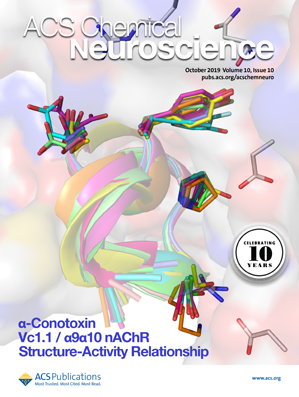Lattice sulfuration enhanced sodium storage performance of Na0.9Li0.1Zn0.05Ni0.25Mn0.6O2 cathode
IF 4.1
3区 医学
Q2 BIOCHEMISTRY & MOLECULAR BIOLOGY
引用次数: 0
Abstract
Introducing lattice oxygen redox for charge compensation in layered metal oxides is an effective way to develop advanced cathodes for high energy density sodium-ion batteries (SIBs). However, the asymmetry of lattice oxygen oxidation and reduction incurs oxygen release and crystal structure rearrangement, leading to poor reversibility of the charge and discharge process. Herein, a Na2S-assisted sulfuration strategy is firstly proposed to incorporate active sulfur into the crystal lattice of Na0.9Li0.1Zn0.05Ni0.25Mn0.6O2 cathode. The Sulfur anions within the interior lattice participate in the redox process and enhance the integral coordination stability by mitigating undesired excessive oxygen redox, while the exterior sulfur forms a polyanionic layer to protect the particle surface against electrolyte corrosion. The incorporation of an extra redox center efficiently facilitates the increase of the discharge capacity from 159.9 to 179.2 mAh g−1 within the voltage range of 1.5–4.5 V. Moreover, the larger ionic radius of sulfur enlarges the interplanar spacing, thus facilitating Na+ ions transfer, especially at high current density. As a result, the modified cathode exhibits significantly enhanced electrochemical performance, with a capacity retention of 87 % after 100 cycles at 0.2C and an excellent rate capability of 98.0 mAh g−1 at 10 C. Moreover, the assembled Na ion full cell based on a commercial hard carbon anode achieves an impressive capacity of 160.4mAh g−1 at 0.1 C and could cycled steadily for over 100 cycles. The modification of layer oxides via sulfuration strategy provides a promising pathway for the structural design of novel cathodes with superior cycle performance for high-energy-density SIBs applications.晶格硫化增强 Na0.9Li0.1Zn0.05Ni0.25Mn0.6O2 阴极的钠储存性能
在层状金属氧化物中引入晶格氧氧化还原进行电荷补偿是开发高能量密度钠离子电池(SIB)先进阴极的有效方法。然而,晶格氧氧化和还原的不对称性会造成氧释放和晶体结构重排,导致充放电过程的可逆性差。本文首次提出了一种 Na2S 辅助硫化策略,在 Na0.9Li0.1Zn0.05Ni0.25Mn0.6O2 阴极的晶格中加入活性硫。内部晶格中的硫阴离子参与氧化还原过程,并通过减轻不希望出现的过量氧氧化还原作用来增强整体配位稳定性,而外部硫则形成一个多阴离子层,保护颗粒表面免受电解质腐蚀。额外氧化还原中心的加入有效地促进了放电容量在 1.5-4.5 V 电压范围内从 159.9 mAh g-1 增加到 179.2 mAh g-1。此外,较大的硫离子半径扩大了平面间距,从而促进了 Na+ 离子的转移,尤其是在高电流密度下。因此,改性阴极的电化学性能显著增强,在 0.2 摄氏度条件下循环 100 次后,容量保持率为 87%,在 10 摄氏度条件下,具有 98.0 mAh g-1 的出色速率能力。此外,基于商用硬碳阳极组装的 Na 离子全电池在 0.1 摄氏度时可达到 160.4mAh g-1 的惊人容量,并可稳定循环 100 次以上。通过硫化策略对层氧化物进行改性,为新型阴极的结构设计提供了一条前景广阔的途径,这种阴极具有卓越的循环性能,可用于高能量密度 SIBs 应用。
本文章由计算机程序翻译,如有差异,请以英文原文为准。
求助全文
约1分钟内获得全文
求助全文
来源期刊

ACS Chemical Neuroscience
BIOCHEMISTRY & MOLECULAR BIOLOGY-CHEMISTRY, MEDICINAL
CiteScore
9.20
自引率
4.00%
发文量
323
审稿时长
1 months
期刊介绍:
ACS Chemical Neuroscience publishes high-quality research articles and reviews that showcase chemical, quantitative biological, biophysical and bioengineering approaches to the understanding of the nervous system and to the development of new treatments for neurological disorders. Research in the journal focuses on aspects of chemical neurobiology and bio-neurochemistry such as the following:
Neurotransmitters and receptors
Neuropharmaceuticals and therapeutics
Neural development—Plasticity, and degeneration
Chemical, physical, and computational methods in neuroscience
Neuronal diseases—basis, detection, and treatment
Mechanism of aging, learning, memory and behavior
Pain and sensory processing
Neurotoxins
Neuroscience-inspired bioengineering
Development of methods in chemical neurobiology
Neuroimaging agents and technologies
Animal models for central nervous system diseases
Behavioral research
 求助内容:
求助内容: 应助结果提醒方式:
应助结果提醒方式:


